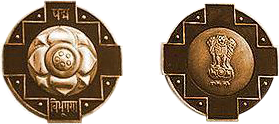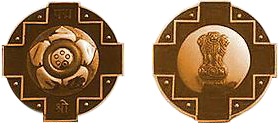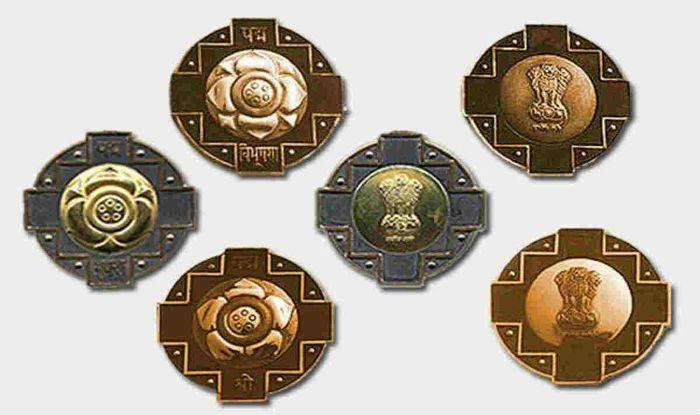Padma Awards, namely, Padma Vibhushan, Padma Bhushan and Padma Shri are given for exceptional and distinguished service in any field including service rendered by Government servants. Padma Awards were instituted in the year 1954. The Padma Awards are announced on the eve of the Republic Day every year except for brief interruption(s) during the years 1978 and 1979 and 1993 to 1997. Government servants including those working with PSUs, except doctors and scientists, are not eligible for these Awards. The total number of awards to be given in a year (excluding posthumous awards and to NRI/foreigners/OCIs) should not be more than 120.
- Padma Awards 2024
- Padma Awards 2022
- Padma Awards 2021
- Padma Awards 2020
- Click here to see the Padma Awards 2019
- Click here to see the Padma Awards 2018
The Padma Awards are conferred on the recommendations made by the Padma Awards Committee, which is constituted by the Prime Minister every year. The nomination process is open to the public. Even self-nomination can be made.
The award is given in three categories, namely,
- Padma Vibhushan for exceptional and distinguished service;
- Padma Bhushan for distinguished service of a high order; and
- Padma Shri for distinguished service.
The award seeks to recognize works of distinction and is given for distinguished and exceptional achievements/service in all fields of activities/disciplines. An illustrative list of the fields is as under:
- Art (includes Music, Painting, Sculpture, Photography, Cinema, Theatre etc.)
- Social work (includes social service, charitable service, contribution in community projects etc.)
- Public Affairs (includes Law, Public Life, Politics etc.)
- Science & Engineering (includes Space Engineering, Nuclear Science, Information Technology, Research & Development in Science & its allied subjects etc.)
- Trade & Industry (includes Banking, Economic Activities, Management, Promotion of Tourism, Business etc.)
- Medicine (includes medical research, distinction/specialization in Ayurveda, Homeopathy, Sidhha, Allopathy, Naturopathy etc.)
- Literature & Education (includes Journalism, Teaching, Book composing, Literature, Poetry, Promotion of education, Promotion of literacy, Education Reforms etc.)
- Civil Service (includes distinction/excellence in administration etc. by Government Servants)
- Sports (includes popular Sports, Athletics, Adventure, Mountaineering, promotion of sports, Yoga etc.)
- Others (fields not covered above and may include propagation of Indian Culture, protection of Human Rights, Wild Life protection/conservation etc.)
The awards are presented by the President of India usually in the month of March/April every year where the awardees are presented a Sanad (certificate) signed by the President and a medallion.
Padma Bhushan Award

The Padma Bhushan, the third-highest civilian award in the Republic of India, stands as a beacon of recognition for those who have rendered distinguished service of a high order. Instituted in 1954, this prestigious honor transcends distinctions of race, occupation, position, or sex, celebrating exceptional contributions across diverse fields.
A Symbol of Distinguished Service:
The Padma Bhushan embodies the spirit of a nation acknowledging its heroes, from the realms of art and literature to science and public service. Recipients are individuals who have not only excelled in their chosen fields but have also made a significant impact on society, leaving a lasting legacy for generations to come.
A Glimpse into the Honorees:
The list of Padma Bhushan awardees is as diverse as India itself. Eminent scientists like Vikram Sarabhai, the architect of India’s space program, and Amartya Sen, the Nobel laureate economist, find their names alongside legendary artists like M.S. Subbulakshmi, the Carnatic vocalist, and Satyajit Ray, the auteur filmmaker. Social reformers like Mother Teresa and Ela Bhatt, the founder of SEWA, stand shoulder-to-shoulder with industrialists like Jamsetji Tata and J.R.D. Tata, whose vision shaped India’s economic landscape.
The Award and its Significance:
The Padma Bhushan is not just a medal; it is a testament to the dedication, perseverance, and unwavering commitment of its recipients. It serves as an inspiration to millions, showcasing the power of individual action to make a difference in the world. The award ceremony, held annually on the eve of Republic Day, is a poignant reminder of the collective strength and potential that lies within India’s diverse citizenry.
Padma Vibhushan Award

The Padma Vibhushan is the second-highest civilian award of the Republic of India, after the Bharat Ratna. It is awarded for “exceptional and distinguished service” in any field. The award was instituted on 2 January 1954, and has been bestowed on over 300 individuals, including 19 posthumous and 21 non-citizen recipients.
The award consists of a medal, a citation, and a cash prize. The medal is a circular disc, 3.5 cm in diameter, made of gold. The obverse of the medal bears the national emblem of India, and the reverse bears the words “Padma Vibhushan” in Hindi and English. The citation is a letter from the President of India, commending the recipient for their achievements. The cash prize is currently ₹2.5 lakh.
The Padma Vibhushan is conferred by the President of India on the eve of Republic Day, annually. The award is recommended by a committee of eminent persons, appointed by the Prime Minister.
Padma Shri Award

The Padma Shri, bestowed upon distinguished individuals for noteworthy contributions in their respective fields, ranks as the fourth-highest civilian award in the Republic of India. Established in 1954, this prestigious honor recognizes exceptional service across a diverse range of areas, from the arts and literature to science and social work.
Unlike many awards associated with a specific field, the Padma Shri encompasses a vast spectrum of human endeavor. From renowned scientists like Satish Dhawan, the architect of India’s space program, to acclaimed artists like A.R. Rahman, the musical maestro, the awardees reflect the vibrant tapestry of Indian society. Social reformers like Anna Hazare, the anti-corruption crusader, and athletes like Milkha Singh, the “Flying Sikh,” stand alongside industrialists like Narayana Murthy, the co-founder of Infosys, whose vision redefined India’s technological landscape.
The Significance of the Award:
The Padma Shri is more than just a medal; it signifies a nation’s appreciation for those who have dedicated their lives to making a positive impact. It serves as an inspiration to countless individuals, showcasing the power of dedication and perseverance in achieving excellence. The annual ceremony on the eve of Republic Day not only celebrates the awardees but also reinforces the collective strength and potential within India’s diverse citizenry.

